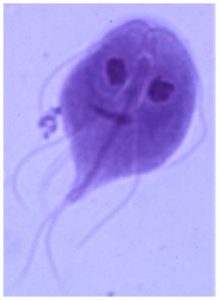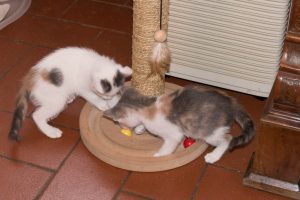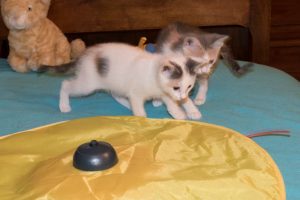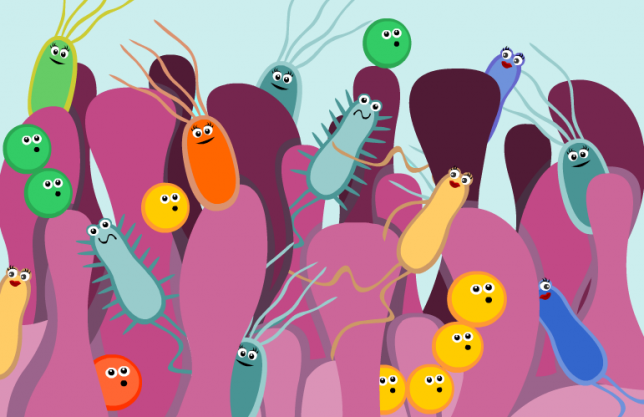Life is very complicated these days. This morning, after consulting with the vet, I discovered that our giardia-ridden kittens will have to undergo a second cycle of treatment, which will begin next week. This means that they will have to spend another month holed up in their luxurious quarantine, poor dears! I am spending almost all of my free time with them…playing with them, feeding them, holding them, cleaning up, sterilizing, and being SUPER CAREFUL whenever I handle anything at all in the quarantine room.
Mind you, it may sound like it, but I’m not complaining. Not at all!!! I mean, just look at that face! 🙂

Well, okay, I admit, I HAVE had a few frustrating moments in which I’ve asked myself, and/or Stefano, HOW and WHY did we get into this mess??? Agh!
But the truth is that we almost certainly saved the lives of our kittens, and probably the lives of their siblings, too (immediately after we received the giardia diagnosis, I got in touch with the woman who gave us the kittens…She had no idea…). So that is something to remember…
And besides, these two kitties are so incredibly adorable and funny and affectionate…They act like normal, playful, curious, crazy kittens that zoom all over the place and then crash and sleep until they have enough strength to go back into the crazy kitten mode…I mean, you can’t tell that there’s anything wrong with them…except for the huge quantity of smelly pooparoni (though it’s MUCH better than it was a couple of weeks ago, let me tell ya)! Yuck!
Okay, enough…It will only be another month, then they’ll be cured, and we’ll be able to let them out into the rest of the house…and meet their older siblings (yikes…a bit nervous about that). If we’re lucky, they’ll be well enough by Xmas. That would be a lovely present indeed!
But that’s not the reason I’m writing this post, even though, hehe!!!, it might seem that way. Nope, this evening I wanted to write (then I got derailed, sorry!) about a new myeloma study that I bumped into just this morning…a very interesting, and mostly Italian!, study on myeloma and dendritic cells (DCs, for short), which is fully available online and has been accepted for publication in “Leukemia.” Here’s the link: goo.gl/wFMjS1 I’ve written a few posts on dendritic cells and myeloma, btw, so you can use my “Search Box” to have a look through my blog, if you want.
The abstract begins with a good explanation of DCs: “Dendritic cells (DCs) play a key role in regulating tumor immunity, tumor cell growth and drug resistance.” The authors believe that MM cells may recruit and reprogram DCs in order to survive. They found a member of the microRNA family (a family of teeny tiny RNA molecules that regulate gene expression), called miR-29b, which is is not downregulated in normal DCs but, drum roll!, is downregulated in most types of cancer, including myeloma.
Now, even though we may not understand (or care!) what exactly this little, hairpin-shaped miR-29b does, etc., the main thing is that it is able to counteract “pro-inflammatory pathways, including STAT3 and NF-kB, and cytokine/chemokine signaling networks which correlated with patients’ adverse prognosis and development of bone disease.”
Translation: more miR-29b, less myeloma cell proliferation.
So, miR-29b is GOOD. From our perspective, of course, not from that of a myeloma cell. 😉
Now, it’s getting late over here in Italy, and I don’t have much time left. Stefano is on his way home (oh, oops, he just walked in the door…I have to go help him with dinner…He’s the chef tonight…). So I have to leave you with this study and all its complexities.
But do have e a look at page 23. There you will find that ASPIRIN and CURCUMIN “revealed a promising therapeutic activity in both MGUS and sMM patients.”
AHA!, so researchers ARE paying attention. This one sentence made my day…my week, even! 🙂
Oh, and guess what? Curcumin upregulates the expression of miR-29b. Tadaaaaaa!
I will have to keep my eye on these authors who are also looking into the role of this little molecule in the progression from MGUS to MM.
Good stuff, good stuff!!! Take care, everyone!!! Ciao!




 For the past seven days I’ve been dividing my free time between our two new kittens and our resident adult cats.
For the past seven days I’ve been dividing my free time between our two new kittens and our resident adult cats.




 Terrible. And yes, I should have “lightened up” a few of these photos, but I don’t like altering photos. Anyway, I’ll see what I can do with the next photos I take (I take heaps every day, actually)…
Terrible. And yes, I should have “lightened up” a few of these photos, but I don’t like altering photos. Anyway, I’ll see what I can do with the next photos I take (I take heaps every day, actually)…
